The first step towards your robotics journey is programming. There are so many programming languages. But which programming language should you learn?

There is no doubt that robotics will be one of the most demanding subjects in the upcoming years. Sokanu expected that the demand for robotics engineers will increase by 3.3% between 2022 and 2032. So the most important step you can take in your life is to learn robotics.
In this article, you will find out which programming language you should learn to take the first step towards your robotics journey. Let’s start…
Table of Contents
Why choose the right programming language for Robotics?
Robotics is involved with complicated processes. From controlling hardware to implementing algorithms, It is a long way. Imagine trying to build a robot with instructions written in a language you hardly understand. Frustrating, isn’t it? That’s why your choice matters.
Choosing the right programming language for robotics is like choosing the perfect tool for a task. Imagine trying to cook a delicious food without salt. You have put all the ingredients perfectly, but you didn’t give the salt. Programming language works like salt in the case of programming a robot. If you don’t use the right programming language, it can really slow down your progress and limit your potential. The language you choose can either make your journey smooth and enjoyable or turn it into a challenging battle.
For instance, if you’re focusing on artificial intelligence or machine learning, Python will be your first choice. On the other hand, if you’re dealing with real-time systems where performance is key, C++ might be your best choice. Another key factor is the community and resources available. As a beginner, you’ll appreciate having a lot of tutorials, forums, and libraries at your hand. Python, for example, has a vast community ready to help, which can make your learning journey smoother and more enjoyable.
Remember, every programming language has its own benefits. By choosing the right one, you equip yourself with a powerful tool that aligns with your project’s goals and your learning curve. So, ask yourself: What do you want to achieve with your robot? Your answer will guide you to the right programming language.
Best Programming Languages for Robotics
Robot Programming Language 01: Python
Python is like the Swiss Army knife of programming languages, especially in robotics. When I first dipped my toes into the world of robotics, Python was the language that made the most sense. Here’s why it’s a go-to:
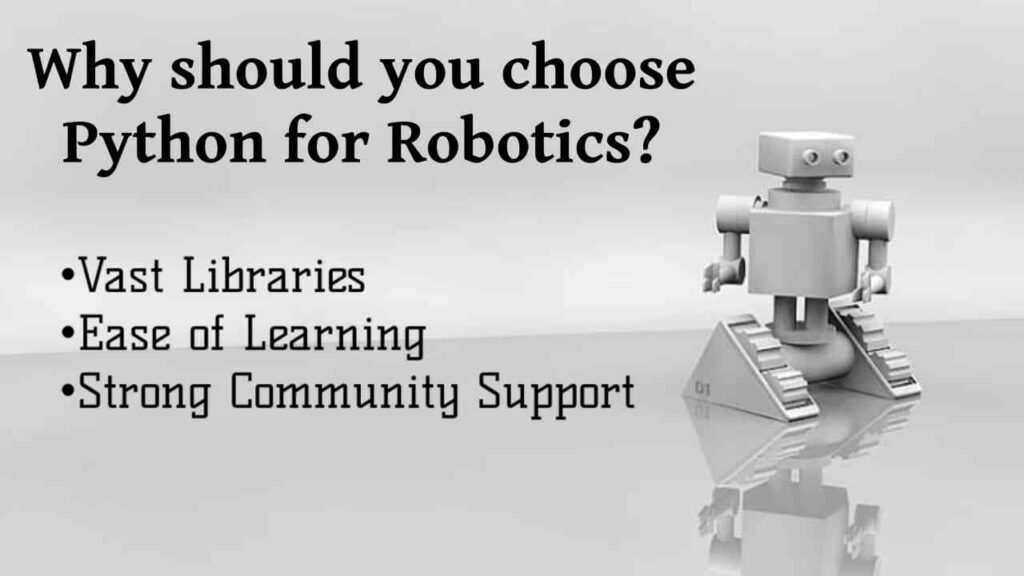
- Ease of Learning: Python’s simple syntax is perfect for beginners. If you’re new to programming, it feels like learning to ride a bike on a smooth road.
- Vast Libraries: Python offers countless libraries like NumPy and TensorFlow, which make complex tasks like data manipulation and machine learning easier.
- Strong Community Support: When you’re stuck, there’s always someone who has faced the same issue before you and shared a solution online.
As Albert Einstein said, “If you can’t explain it simply, you don’t understand it well enough.” Python embodies this philosophy, making complex robotic concepts accessible to everyone.
Robot Programming Language 02: C++
When it comes to robotics, C++ is like the backbone of a robot’s brain. From controlling sensors to processing data, C++ can do it all. When I first entered into the world of robotics, C++ felt like learning a new dialect—challenging, but powerful. It’s a go-to language. Why? Because C++ gives you:
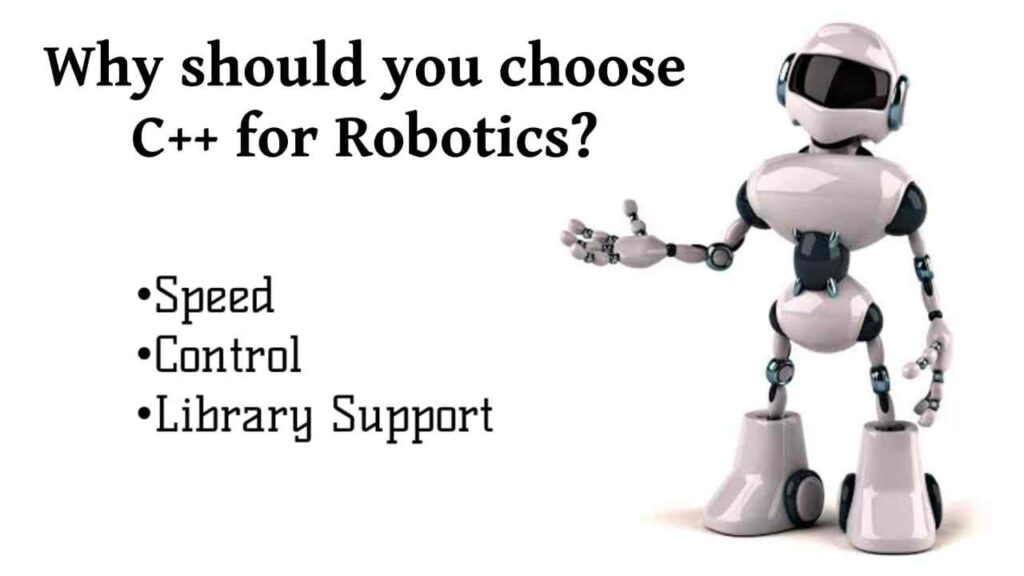
- Speed: Timing is most important parameter in robotics. The faster a robot can respond to a situation, the better it performs. It’s the key factor that separates an average robot from a great one. That’s why speed matters.
- Control: C++ is a versatile programming language that provides access to low-level hardware manipulation. What does that mean is you can directly interact with the hardware components of a system, such as sensors and motors.
- Library Support: C++ offers a vast ecosystem of libraries. Libraries like OpenCV provide powerful tools for image processing, object detection, face recognition, and much more. These libraries simplify complex tasks, allowing developers to focus on innovation rather than reinventing the wheel.
C++ is a language that gives you both speed and precision and in robotics, those qualities are gold. C++ might be challenging at first, but it’s worth the effort.
Robot Programming Language 03: MATLAB
MATLAB is a powerhouse in robotics. It helps you to work on complex concepts with clarity. Why? Because MATLAB gives you:
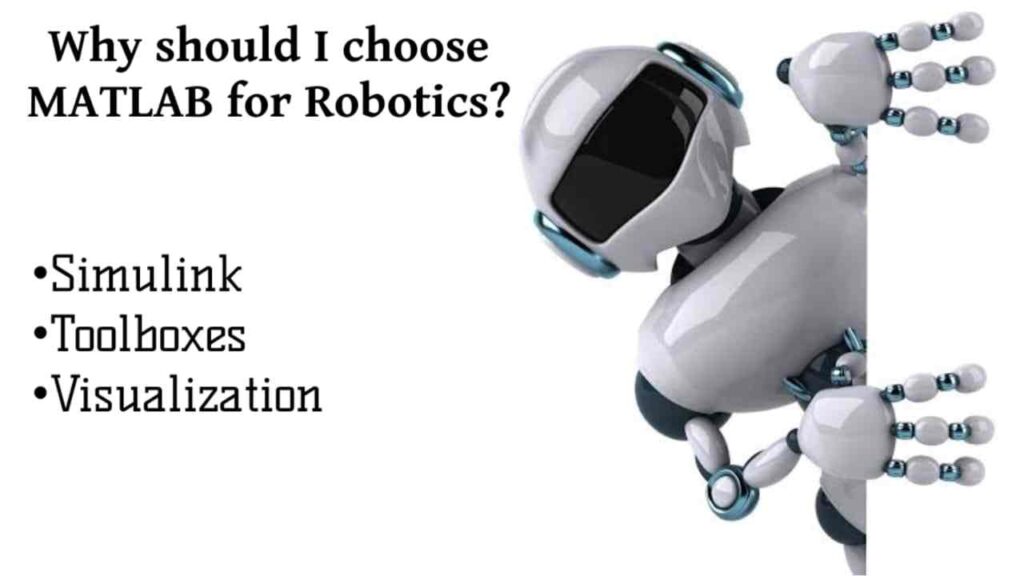
- Simulink: MATLAB helps to simulate the robot in the virtual world. Think of it as a playground where you can test your ideas without touching a real robot.
- Toolboxes: Its specialized toolboxes, like the Robotics System Toolbox, provide pre-built functions to accelerate your robot development.
- Visualization: You can visualize your robot’s performance through graphs and plots with the help of MATLAB. This is important for understanding how your robot will interact with its environment.
As the saying goes, “Mathematics is the language of the universe.” With MATLAB, you’re fluent in that language.
Robot Programming Language 04: JAVA
When it comes to robotics, Java might not be the first language that come into your mind, but it’s definitely worth considering. Why? Because Java offers some different qualities that can make your robotics project more unique. What are those? Let’s see…
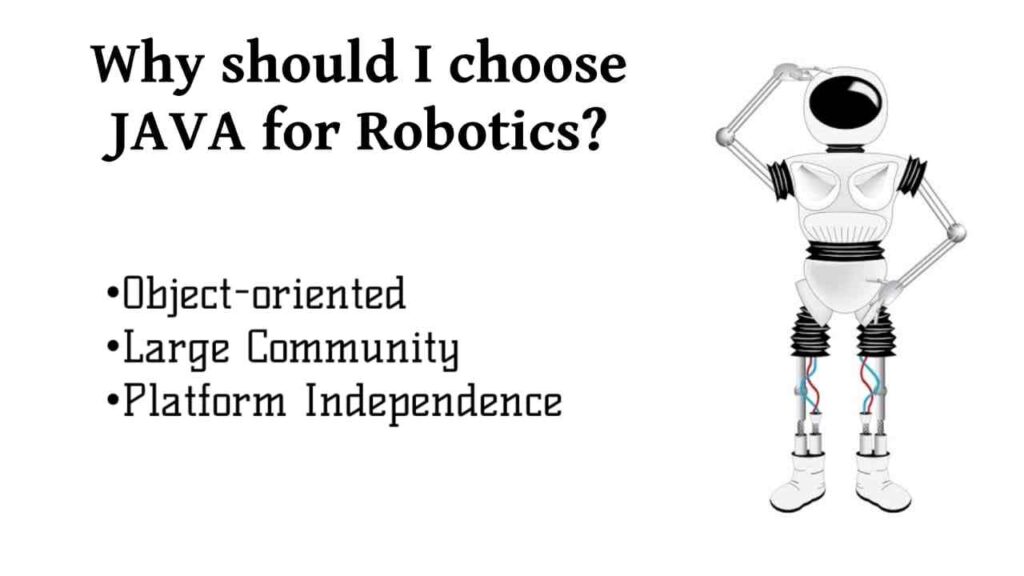
- Object-Oriented: Java allows modular and reusable code. By using classes and objects, you can model real-world robotic components like sensors, actuators, and controllers. You can break down complex robotic systems into manageable parts. That makes your code easier to maintain.
- Platform Independence: Java is known for its “write once, run anywhere” capability. What does that mean is simply you can run your code on various systems without any modification.
- Large Community: You can find countless resources, libraries and tools for complex robotic functions. As it has a large community, finding solutions of Java-related problems is just one click away.
Alan Kay once said, “The best way to predict the future is to invent it.” Java shows you the path to invent your robotic future!
Robot Programming Language 05: ROS
When you start to build complex robots, you can feel overwhelmed to manage multiple systems. Here comes ROS. The Robot Operating System. It’s a game changer in handling robot software development. How? Because ROS gives you…
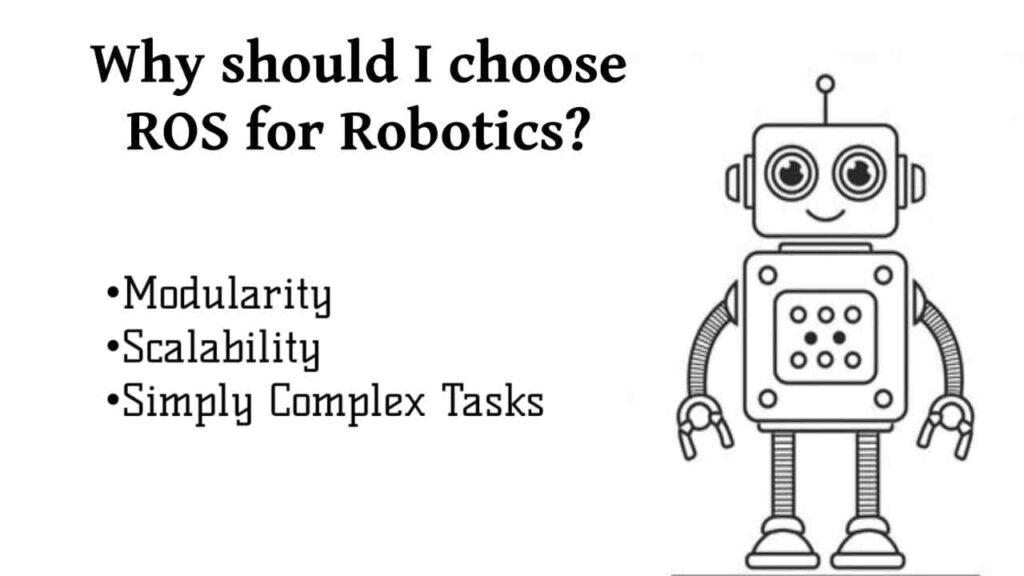
- Modularity: By using ROS, you can break down complex systems into smaller, manageable parts. It helps you to finish your project more effectively.
- Scalability: Sometimes you need to integrate with different hardware. ROS helps you there. ROS works like the backbone of the entire robotic system.
- Simply Complex Tasks: ROS offers pre-built packages for everything from motion planning to sensor integration. You don’t have to reinvent the wheel.
As Steve Jobs once said, “Great things in business are never done by one person.” By using ROS you can easily handel complex robotic systems with your team.
Here is the table that shows which programming language is used in robotics and it’s reason:
| Language | Use in Robotics | Reasons |
|---|---|---|
| Python | High-level control, scripting, and AI/ML integration |
|
| C++ | Low-level hardware control, real-time systems |
|
| MATLAB | Robotics research, simulations, and data analysis |
|
| Java | Robot operating systems, simulation environments |
|
| ROS (Robot Operating System) | Middleware for robot software development |
|
Conclusion
Choosing the right programming language in robotics is like picking the right tool from your toolbox—each tool is used for different purposes. When I explored the robotics world, I couldn’t find a single language that could do it all.
Python was my first choice for quick prototyping. On the other hand, C++ was my first choice if I wanted more speed and control on my robot. But it’s always not about the language; it’s about finding the ones that fit your project and your comfort zone. Don’t wait too much on picking the right programming language. Just explore, experiment, and find what works for you.
Remember, the best language is the one that helps you to bring your robotic dreams to life. So, Which language are you choosing to start your journey? Let me know in the comment section.









